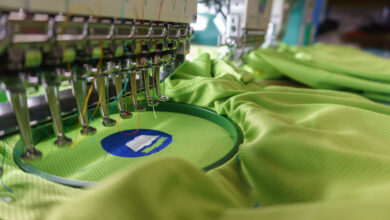There are several ways to create a distressed or worn look when using direct-to-garment (D2) printing, but for more of an authentic look, the best method is a combination of these methods.
Beginning with artwork, there are distressed patterns that can be overlaid onto your image using design software. Simply search online for “distressed pattern” and a “how-to” tutorial on whichever software you may be using. This will create the cracking and flaking look.
With your printer software, you can decrease the amount of ink that is being printed by either changing the ink volume itself or by printing at a lower resolution. For example, our standard white ink print resolution is 1440 X 720 pixels, if we change this to 720 X 720 in the printing software, it should cut our ink down in almost half, this works the same for color ink.
If you are using white ink, cut the amount of pretreat down by at least 25 percent. You don’t want to go too low because you still need a good bond between the ink and the garment but using less pretreat will allow for more of a translucent white ink.
If you did not want to reduce the amount of pretreatment or ink, you can also print on a shirt with polyester content. This will naturally give you a worn look due to the nature of D2 water-based ink bonding to synthetic fabric.
As with anything someone may not be familiar with, we always advocate you do wash tests. If the garment doesn’t hold up during several wash cycles, then the worn look becomes more of an issue.
—ColDesi



